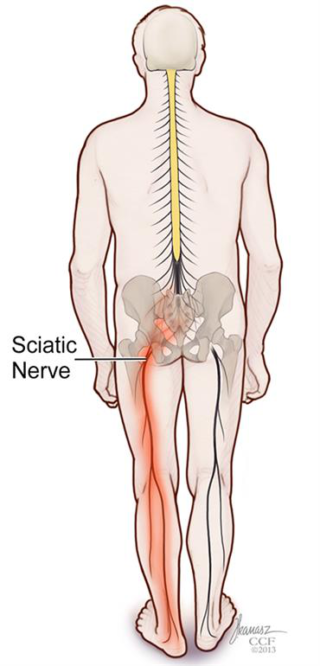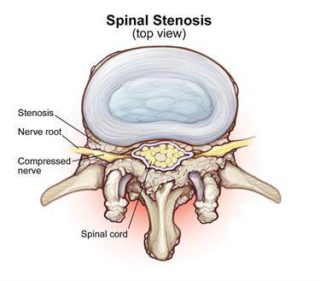CONDITIONS
Medical Conditions we treat:
- Musculoskeletal Conditions
Joints & Bones
Frozen Shoulder (Adhesive Capsulitis)
Bursitis
Dislocated Shoulder
Post Surgical Rehabilitation
Knee Pain
Osteoarthritis
Condramalacia Patella
Joint Stiffness
Neck & Spine
Neck Pain & Stiffness
Spondylitis
Low Back Pain
Sciatica
Degenerative Disc Disease(DDD)
Herniated Discs(Bulging Discs)/Slipped Disc
Spondylosis
Scoliosis
Piriformis Syndrome
Posture problems
Muscles
Spasm
Fibromyalgia
Rotator Cuff Injuries
De Quervain’s tenosynovitis
Trigger Finger
- Neurological conditions
- Sports injury conditions
Sciatica
Sciatica pain is caused by an irritation, inflammation, pinching or compression of a nerve in the lower back. The most common cause is a herniated or slipped disk that causes pressure on the nerve root. Most people with sciatica get better on their own with time and self-care treatments.
Sciatica is nerve pain from an injury or irritation to the sciatic nerve, which originates in your buttock/gluteal area. The sciatic nerve is the longest and thickest (almost finger-width) nerve in the body. It’s actually made up of five nerve roots: two from the lower back region called the lumbar spine and three from the final section of the spine called the sacrum. The five nerve roots come together to form a right and left sciatic nerve. On each side of your body, one sciatic nerve runs through your hips, buttocks and down a leg, ending just below the knee. The sciatic nerve then branches into other nerves, which continue down your leg and into your foot and toes.
True injury to the sciatic nerve “sciatica” is actually rare, but the term “sciatica” is commonly used to describe any pain that originates in the lower back and radiates down the leg. What this pain shares in common is an injury to a nerve — an irritation, inflammation, pinching or compression of a nerve in your lower back.
If you have “sciatica,” you experience mild to severe pain anywhere along the path of the sciatic nerve – that is, anywhere from the lower back, through the hips, buttocks and/or down your legs. It can also cause muscle weakness in your leg and foot, numbness in your leg, and an unpleasant tingling pins-and-needles sensation in your leg, foot and toes.

Causes
Sciatica can be caused by several different medical conditions including:
- A herniated or slipped disk that causes pressure on a nerve root. This is the most common cause of sciatica. About 1% to 5% of all people in the U.S. will have a slipped disk at one point in their lives. Disks are the cushioning pads between each vertebrae of the spine. Pressure from vertebrae can cause the gel-like center of a disk to bulge (herniate) through a weakness in its outer wall. When a herniated disk happens to a vertebrae in your lower back, it can press on the sciatic nerve.

- Degenerative disk disease is the natural wear down of the disks between vertebrae of the spine. The wearing down of the disks shortens their height and leads to the nerve passageways becoming narrower (spinal stenosis). Spinal stenosis can pinch the sciatic nerve roots as they leave the spine.
- Spinal stenosis is the abnormal narrowing of the spinal canal. This narrowing reduces the available space for the spinal cord and nerves.
- Spondylolisthesis is a slippage of one vertebra so that it is out of line with the one above it, narrowing the opening through which the nerve exits. The extended spinal bone can pinch the sciatic nerve.
- Bone spurs (jagged edges of bone) can form in aging spines and compress lower back nerves.
- Trauma injury to the lumbar spine or sciatic nerve.
- Tumors in the lumbar spinal canal that compress the sciatic nerve.
- Piriformis syndrome is a condition that develops when the piriformis muscle, a small muscle that lies deep in the buttocks, becomes tight or spasms. This can put pressure on and irritate the sciatic nerve. Piriformis syndrome is an uncommon neuromuscular disorder.
- Cauda equina syndrome is a rare but serious condition that affects the bundle of nerves at the end of the spinal cord called the cauda equina. This syndrome causes pain down the leg, numbness around the anus and loss of bowel and bladder control.
Symptoms
The symptoms of sciatica include:
- Moderate to severe pain in lower back, buttock and down your leg.
- Numbness or weakness in your lower back, buttock, leg or feet.
- Pain that worsens with movement; loss of movement.
- “Pins and needles” feeling in your legs, toes or feet.
- Loss of bowel and bladder control (due to cauda equina).
Diagnosis
During your physical exam, you will be asked to walk so your healthcare provider can see how your spine carries your weight. You may be asked to walk on your toes and heels to check the strength of your calf muscles. Your provider may also do a straight leg raise test. For this test, you’ll lie on your back with your legs straight. Your provider will slowly raise each leg and note the point at which your pain begins. This test helps pinpoint the affected nerves and determines if there is a problem with one of your disks. You will also be asked to do other stretches and motions to pinpoint pain and check muscle flexibility and strength.
Depending on what your healthcare provider discovers during your physical exam, imaging and other tests might be done. These may include:
- Spinal X-rays to look for spinal fractures, disk problems, infections, tumors and bone spurs.
- Magnetic resonance imaging (MRI) or computed tomography(CT) scans to see detailed images of bone and soft tissues of the back. An MRI can show pressure on a nerve, disk herniation and any arthritic condition that might be pressing on a nerve. MRIs are usually ordered to confirm the diagnosis of sciatica.
- Nerve conduction velocity studies/electromyography to examine how well electrical impulses travel through the sciatic nerve and the response of muscles.
- Myelogram to determine if a vertebrae or disk is causing the pain.

